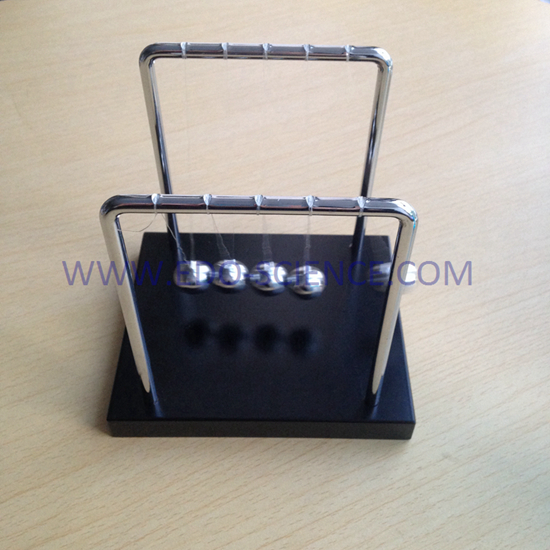Construction
A typical Newton's cradle consists of a series of identically sized metal balls suspended in a metal frame so that they are just touching each other at rest. Each ball is attached to the frame by two wires of equal length angled away from each other. This restricts the pendulums' movements to the same plane.
Action

If one ball is pulled away and is let to fall, it strikes the first ball in the series and comes to nearly a dead stop. The ball on the opposite side acquires most of the velocity and almost instantly swings in an arc almost as high as the release height of the last ball. This shows that the final ball receives most of the energy and momentum that was in the first ball. The impact produces a compression wave that propagates through the intermediate balls. Any efficiently elastic material such as steel will do this as long as the kinetic energy is temporarily stored as potential energy in the compression of the material rather than being lost as heat.
With two balls dropped, exactly two balls on the opposite side swing out and back. With three balls dropped, three balls will swing back and forth, with the central ball appearing to swing without interruption.




